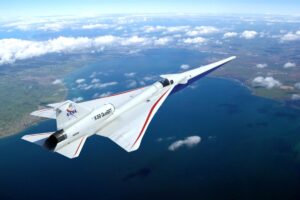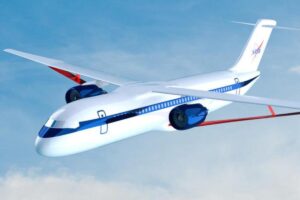Mastering the ARINC 429 Protocol for Avionics Systems
Table of Contents
- Introduction
- Overview of ARINC 429 and its significance in avionics
- The importance of data communication in modern aircraft
- Purpose and objectives of the white paper
- The ARINC 429 Protocol: A Brief History
- Origins and development
- Early adoption in the aviation industry
- Evolution and current relevance
- Understanding ARINC 429: Key Features
- Data format and structure
- Unidirectional communication
- Labeling and Data Words
- Error detection mechanisms
- Transmission speed and standards
- ARINC 429 Components
- Transmitters and receivers
- Bus structure and wiring
- The Role of ARINC 429 in the avionics bus system
- Applications of ARINC 429 in Avionics
- Data transfer in flight control systems
- Integration in navigation, communication, and surveillance systems
- Role in engine monitoring and environmental control systems
- Applications in aircraft instrumentation
- Interfacing with Other Protocols
- ARINC 429 vs. ARINC 664 and CAN
- Interoperability and hybrid systems
- Advantages of combining protocols for diverse avionics systems
- ARINC 429 Protocol in Modern Aircraft
- Current use in various aircraft models
- Future trends in data communication in aviation
- Impact of ARINC 429 on aircraft design and efficiency
- Challenges and Limitations of ARINC 429
- Bandwidth limitations
- Complexity in system integration
- Challenges in long-term maintenance and support
- Alternative solutions and developments
- Best Practices for Implementing ARINC 429
- Design considerations
- Testing and troubleshooting techniques
- Ensuring reliable communication and safety
- Conclusion
- Recap of key points
- The future of ARINC 429 in avionics and aircraft communication systems
- Final thoughts
- Top 15 Keywords
1. Introduction
Overview of ARINC 429 and Its Significance in Avionics
The ARINC 429 protocol is one of the cornerstones of avionics communication, specifically designed to meet the complex demands of the aviation industry. ARINC 429, established by Aeronautical Radio, Incorporated (ARINC), is a data bus protocol that enables reliable and high-speed communication between various avionics equipment on an aircraft. Developed in the late 1970s, it was tailored to handle the unique requirements of aircraft systems, such as real-time data transfer, robustness against interference, and fault tolerance.
ARINC 429 has become an integral part of many systems within modern aircraft, supporting both primary and secondary flight controls, avionics displays, navigation, and communication systems. The protocol’s widespread use and continuous improvements have solidified its position as the industry standard for reliable, unidirectional data transmission.
The Importance of Data Communication in Modern Aircraft
In today’s aircraft, data communication plays a crucial role in ensuring operational safety, efficiency, and functionality. With an increasing number of systems being integrated into modern airframes, ensuring that all devices can seamlessly communicate with each other is a fundamental requirement. The ARINC 429 protocol serves this purpose by providing a robust and effective means of communication between critical avionics components.
Data transmitted via ARINC 429 is typically utilized for various aircraft functions, such as controlling flight surfaces, monitoring engine parameters, and displaying critical information to pilots. ARINC 429 ensures that these functions occur in real-time, with minimal delay, thereby contributing directly to the operational safety and effectiveness of the aircraft.
Purpose and Objectives of the White Paper
This white paper aims to provide a comprehensive understanding of the ARINC 429 protocol, focusing on its features, applications, and relevance within modern avionics systems. The paper will explore the core characteristics of the protocol, the technologies that support it, and how it integrates with other systems in aircraft. Furthermore, it will highlight best practices for implementing ARINC 429 and the challenges and limitations of the protocol in current aerospace environments.
By the end of this white paper, readers will have a clear understanding of ARINC 429’s role in aircraft communication, its practical applications, and how to leverage its full potential for effective avionics system integration.
2. The ARINC 429 Protocol: A Brief History
Origins and Development
The ARINC 429 protocol was first developed in the 1970s to address the need for a standardized means of communication between avionics components. Prior to ARINC 429, the aviation industry used a variety of proprietary communication protocols that were not standardized across different aircraft systems, leading to integration challenges and inefficiencies.
The ARINC 429 standard was developed to simplify these challenges, offering a unified method for transmitting data between systems within an aircraft. It was designed to be robust enough to handle the specific environmental conditions of aviation, such as high electromagnetic interference and the need for real-time data transmission.
Early Adoption in the Aviation Industry
The early adoption of ARINC 429 was driven by the aviation industry’s growing need for reliable and standardized communication systems. As aircraft became more complex, the ability to integrate various systems efficiently became a necessity. ARINC 429 provided a solution, and by the 1980s, it was widely adopted in commercial, military, and private aviation sectors.
Evolution and Current Relevance
While ARINC 429 has seen some developments over the years, its core functionality has remained largely the same. The protocol has evolved to accommodate new technologies and systems, but its fundamental design principles, such as simplicity, reliability, and fault tolerance, have stood the test of time. Today, ARINC 429 remains an industry standard and continues to be implemented in both new aircraft and as part of system upgrades in existing platforms.
3. Understanding ARINC 429: Key Features
Data Format and Structure
ARINC 429 uses a simple data format that is easy to interpret by both the transmitting and receiving systems. The basic unit of data transmission is the “data word,” which is a 32-bit word divided into different fields. The key components of an ARINC 429 data word include the label, data field, and parity bit.
Unidirectional Communication
One of the most important characteristics of ARINC 429 is that it uses unidirectional communication. This means that data flows in one direction only—from the transmitter to the receiver. This design decision simplifies the system architecture and ensures that data transmission is reliable and straightforward.
Labeling and Data Words
The ARINC 429 protocol includes a label field in each data word, which allows the receiving system to identify the type of data being transmitted. This labeling mechanism is crucial for the accurate interpretation of data. The data word may carry any type of information, such as aircraft speed, altitude, or engine status.
Error Detection Mechanisms
ARINC 429 includes built-in error detection mechanisms to ensure data integrity. Parity checks are used to detect single-bit errors in the transmitted data. Additionally, if a receiver detects an error, it can reject the data, ensuring that only valid information is processed.
Transmission Speed and Standards
ARINC 429 supports two transmission speeds: a low speed (12.5 kbps) and a high speed (100 kbps). These speeds are designed to meet the needs of different avionics systems, with slower speeds being used for less critical data and higher speeds for more time-sensitive information.
4. ARINC 429 Components
Transmitters and Receivers
The ARINC 429 system relies on specialized hardware for transmitting and receiving data. The transmitters send data onto the bus, while the receivers monitor the bus for incoming data. Both components must adhere to the ARINC 429 electrical and timing standards to ensure compatibility.
Bus Structure and Wiring
The ARINC 429 bus typically consists of a twisted-pair wire, which helps minimize electromagnetic interference. The twisted pair ensures that data transmission remains clear even in the electrically noisy environment of an aircraft.
Role of ARINC 429 in the Avionics Bus System
ARINC 429 plays a central role in the avionics bus system, which interconnects all the critical systems on the aircraft. By providing a reliable means of data transfer, ARINC 429 ensures that each system has access to the data it needs, whether for operation, monitoring, or diagnostics.
5. Applications of ARINC 429 in Avionics
This section would cover the practical use cases of ARINC 429 in various avionics subsystems, such as flight control, navigation, and communication systems. Additionally, it would explore its importance in monitoring and diagnostic systems, and how it interfaces with other data protocols in the aircraft.





